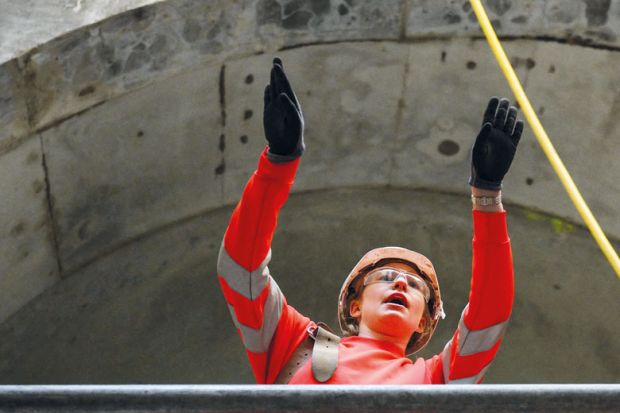UK universities face a “big job” in inspecting campuses for the presence of unsafe concrete, with the complexity of most estates and the high demand for structural engineers adding to the potential for more disruption at the start of the academic year.
Some institutions have already had to close buildings constructed using reinforced autoclaved aerated concrete (Raac), with others in the process of undertaking urgent inspections in light of new guidance from the Department for Education that warns that these types of buildings are at risk of sudden collapse.
Raac was used widely as a building material from the 1950s until the 1990s, and the majority of universities should be aware that they might be affected, said Chris Goodier, professor of construction engineering and materials at Loughborough University.
“Will we find any? Yes – why wouldn’t we?” he said. “Most universities built something in the 1960s and 1970s. It could be a flat-roofed lecture hall or academic offices. I would guess almost every university built something like this at that time, and therefore you need to inspect and probably you will find some of it.”
Professor Goodier said universities were “interesting cases” because of the scale and range of buildings they maintain.
“They have accommodation, lecture halls, offices, a lot of storage and leisure facilities”, he explained. “Different building types with different usages and levels of risk. A lot of it isn’t actually owned by them as well any more, and then the question is whose responsibility is it to check. It is a big job.”
But Professor Goodier said his own institution had already reviewed its 400-building estate and found no Raac. Universities, he said, were better equipped than schools to conduct such operations because they possess in-house expertise in estates teams, who already have a good knowledge of their buildings.
Nevertheless, some may well be caught out, he warned, especially if they had not heeded earlier calls to take action.
“The worst case is if a university hasn’t inspected until they heard the news, and they’ve gone round and found a lot of Raac last minute,” Professor Goodier said.
“And then they need to sort it out before the start of term and are now competing with all schools for expertise…We may well see more lecture theatres close and maybe some accommodation, too.”
According to Richard Hunt, who leads the building defects service for the estates consultancy firm Hollis, where Raac is found a structural engineer will need to be brought in to assess the condition of the building and determine what needs to be done.
Possible remedies range from increased monitoring of a building or carrying out low-level remedial works to, at the other end of the spectrum, having to replace a roof as soon as possible, he said.
The cost will depend on the scale of the works and size of the building, but it “could be a lot of money” – especially if a large logistical operation is required alongside the repair job.
Mr Hunt said that while inspections need not be a lengthy exercise in normal circumstances, the current attention on Raac could mean the process takes longer.
“When you’ve got a situation that has blown up like this, it is inevitable that the resources we’ve got as a country are stretched to a certain degree. But we are very well equipped with surveyors and engineers to react to situations such as this,” he said.
Register to continue
Why register?
- Registration is free and only takes a moment
- Once registered, you can read 3 articles a month
- Sign up for our newsletter
Subscribe
Or subscribe for unlimited access to:
- Unlimited access to news, views, insights & reviews
- Digital editions
- Digital access to THE’s university and college rankings analysis
Already registered or a current subscriber? Login








